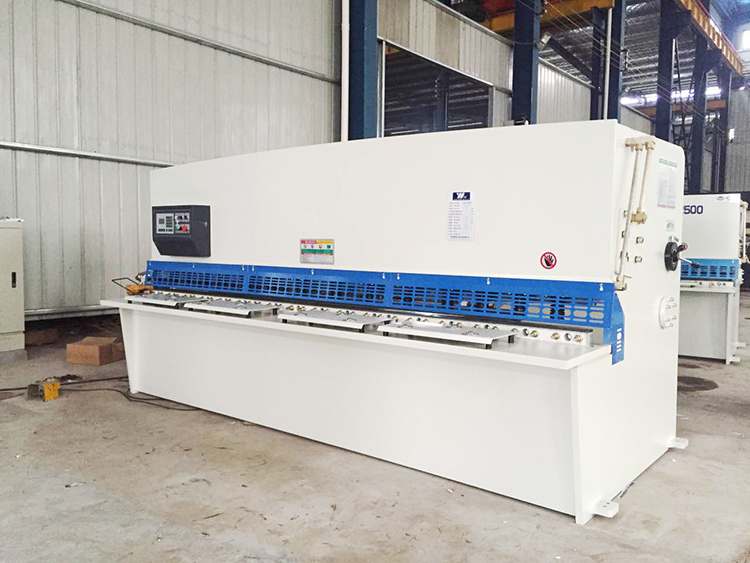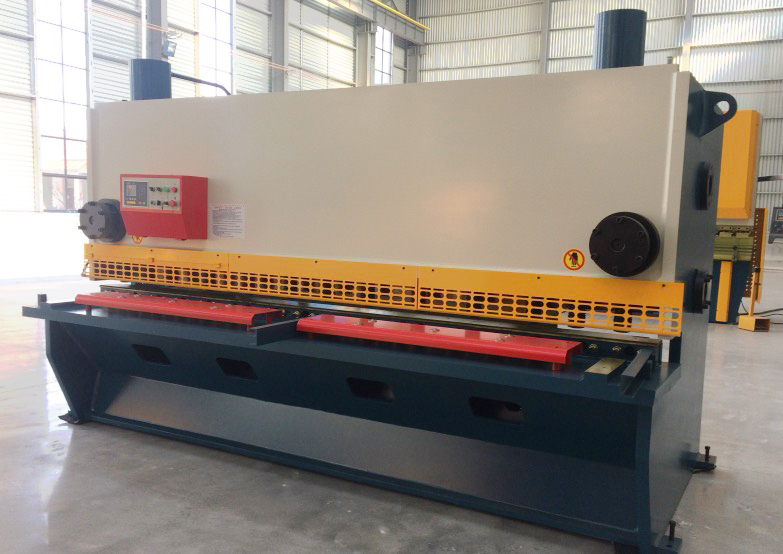Shearing machine cutting methods and techniques
In the laser cutting process of CNC shears, the roughness of laser cutting is required, especially for the workpiece of medium and thick plates. If you do not pay attention to the cutting process, it is likely to cause cutting errors. Here, it is generally required to control the cutting surface of the CNC shears The roughness.
The hydraulic press removes the lower bearing plate, the shutter and the positioning core, and places the 0.10/1000 square level on the end face of the piston in the vertical and horizontal directions, and finds the vertical and horizontal directions to be horizontal to ±1 grid. If it exceeds ±1 grid, you can lower the nut Put a shim on the bottom and align it again, tighten the anchor nut, and check until it is qualified.

The hydraulic bending machine includes a support, a workbench and a clamping plate. The workbench is placed on the support. The workbench is composed of a base and a pressing plate. The base is connected to the clamping plate through a hinge. The base is composed of a housing, a coil and a cover. It is placed in the recess of the seat shell, and the top of the recess is covered with a cover plate. When in use, the wire is energized to the coil, and the gravitational force is generated on the pressing plate after being energized, so as to realize the clamping of the thin plate between the pressing plate and the base.
Due to the electromagnetic clamping, the pressing plate can be made into a variety of workpiece requirements, and workpieces with side walls can be processed. The die forging hydraulic press introduces a series of products produced by the world's advanced technology.
This hot die forging vertical press is used in the manufacturing of automobiles, tractors, internal combustion engines, ships, aviation, mining machinery, petroleum machinery, hardware tools, etc., for large quantities of ferrous and non-ferrous metal die forging and finishing forgings, forging The produced forgings have the advantages of high precision, high material utilization, high productivity, easy automation, low requirements for workers' operation technology, low noise and vibration, etc., so the application in modern forging production is becoming more and more extensive, which is indispensable for modern forging production. The lack of high precision forging equipment.

For the laser cutting of plates with a thickness greater than 2mm, the cutting surface roughness is unevenly distributed and changes greatly along the thickness direction. There are two notable features:
1) The cutting surface morphology is divided into two obvious parts, the upper surface is smooth and flat, the cutting stripes are neat and small; the lower cutting stripes are disordered, the surface is uneven, and the roughness value is large. The upper part has the characteristics of direct action of the laser beam, The lower part has the characteristics of molten metal erosion.
2.) The surface roughness of the area on the cutting surface is generally uniform and does not change with height. The surface roughness of the lower area changes with height. The closer to the lower edge, the greater the surface roughness value, and the surface roughness of the lower edge reaches the maximum.. Continuous CNC shearing machine laser cutting or pulse laser cutting, the cutting surface shows obvious upper and lower parts, the difference is that the cutting fringes on the upper part of the pulse laser cutting surface have a corresponding relationship with the pulse frequency;
The higher the frequency, the finer the stripes and the higher the surface roughness. The density and surface roughness of the cutting stripes on the upper part of the cutting surface are mainly related to the cutting speed. Therefore, when evaluating the cutting surface quality, the following edge surface roughness should be used as a reference.
But the real bottom edge is just a line, and its roughness is difficult to measure. It can be replaced by measuring the roughness near the bottom edge.







